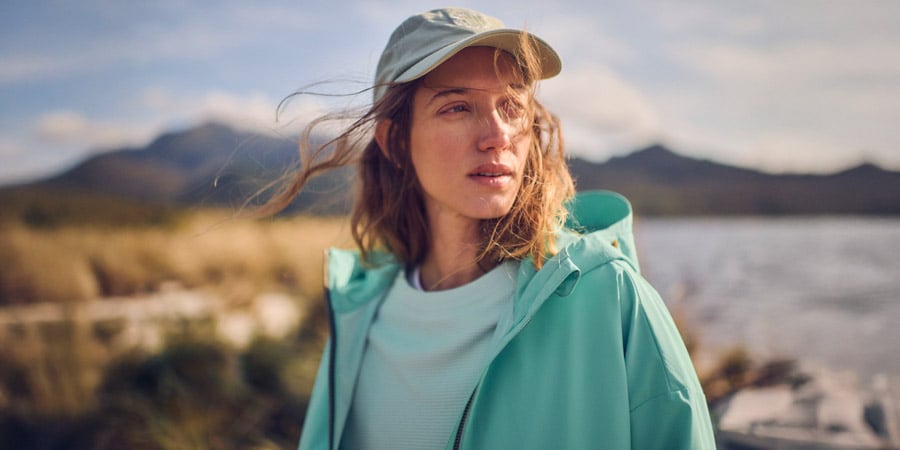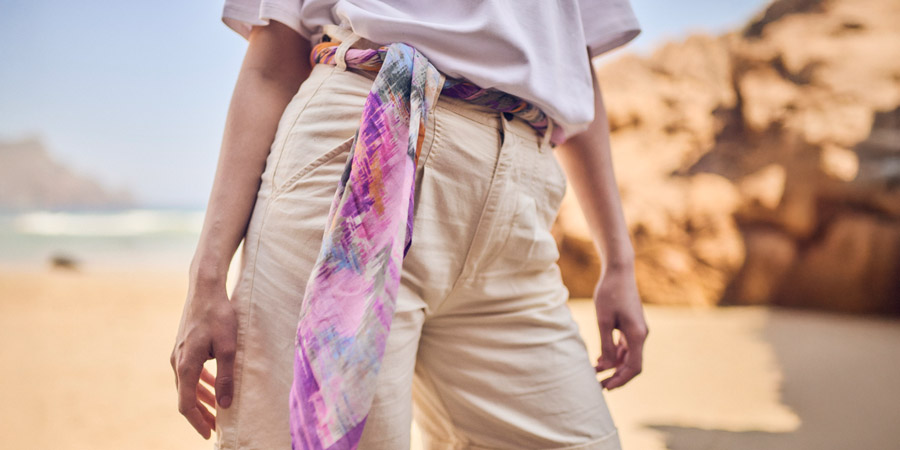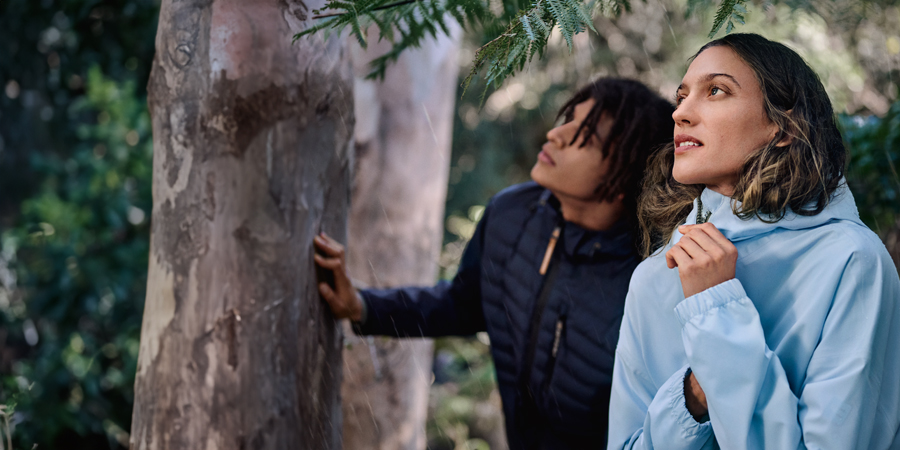Foodforest -
7 edible berries and plants from the forest
How to find blueberries, woodruff & Co.
Woodruff, wild garlic, blueberries and finally rose hips - the forest keeps serving up new delicacies all year round, you just have to look carefully. But what is edible, where can you find the corresponding plants, and what do you have to bear in mind when picking and processing them? We answer these questions about seven of the most popular edible forest plants.
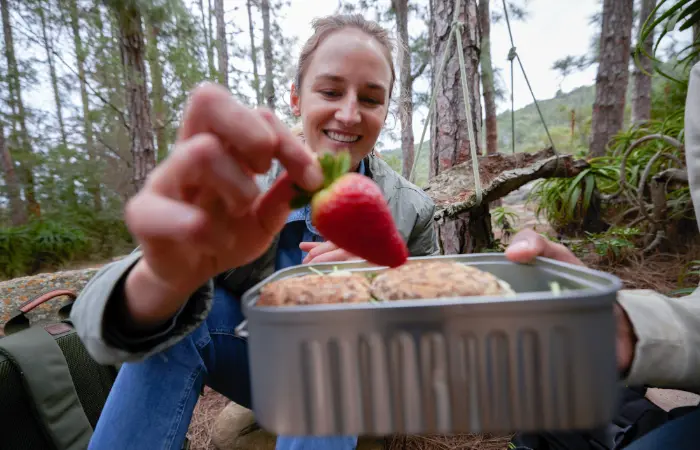
Why herbs and berries from the forest taste so much better.
Have you ever nibbled on juicy-sweet blueberries or wild strawberries while walking in the forest and thought that they tasted much more aromatic than the alternatives from the supermarket? In fact, wild fruits and herbs have much more time to grow and ripen, correspondingly for the enrichment of flavours.
Unlike cultivated plants, they do not receive fertilizers and thrive in sometimes poor soils with little light and water. In the end, the fruits of wild plants are therefore usually much smaller and the harvest is significantly smaller than with plants cultivated for yield in conventional farming. On the other hand, a wealth of sweetness and aromas has developed in the small fruits over time. No, wonder, then, that after a first taste, one would like to have more. In fact, many berries and herbs from the forest may be picked in small quantities for home consumption, but there are rules.
Edible plants from nature: rules for picking and taking home.
In order not to harm nature and wildlife, there are of course some basic rules for harvesting and collecting edible plants in the forest. Not everywhere may be harvested and picked, some plant species are under special protection and may not be touched by humans. You can read about some of these rules in this article. You should also take the following three points to heart:
- Before picking, you should always make sure that it is allowed in the area you are planning to visit. You can find out about the rules in enforced there from the relevant forestry office, town or municipality.
- Of course, you should also be 100% sure that the plant you have in your sights is edible. So only, pick what you can recognize without a doubt. Many seemingly familiar plants have relatives that look confusingly similar, but can be highly poisonous.
- While wild animals depend on berries and herbs as a food source, for us, it is a nice addition. Especially in densely populated regions with little forest, where animals can't find much, and perhaps many people collect some, you should take a good look and consider whether it seems appropriate to still harvest something there.
If you are interested in using wild plants but don't know much about them, try a guided walk or a course. Many foresters, cities and municipalities have now recognized people's desire to discover nature and offer appropriate guided tours in which plants are identified and rules explained.
7 edible plants from nature - tips for collecting and processing wild plants
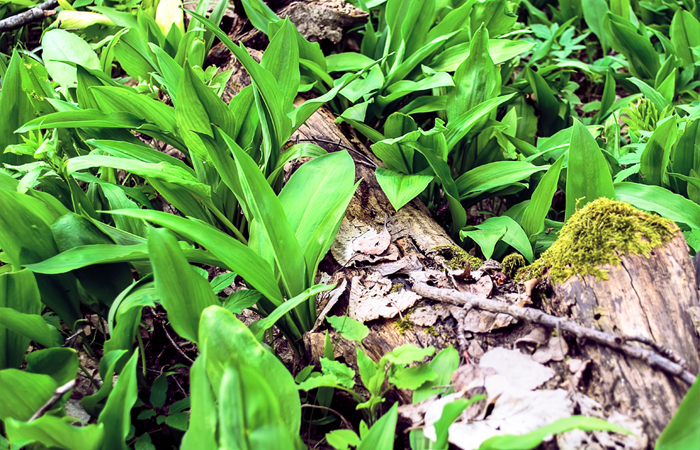
Collecting wild garlic in the forest
Wild garlic is one of the first known forest plants that you can collect in spring. You can pick the first aromatic leaves as early as March. You can take your time with the harvest until the flowering season in May, after which the plant unfortunately loses some of its aroma due to the energy-consuming flower formation and tastes bland.
But be careful, because wild garlic has a dangerous doppelgänger: the lily of the valley looks confusingly similar to wild garlic in both leaves and flowers. Never rely on your eyes, but follow your nose. Only wild garlic leaves have a strong garlic smell. When you rub the leaves between your fingers, you should be able to detect a strong garlic smell, only then are you on the safe side.
You can find wild garlic in the forest in shady and damp places under deciduous trees and bushes. To allow the plant to sprout and recover, you should only ever cut off a maximum of 2 leaves per stem. To avoid damaging the plant unnecessarily, it is best to use a sharp knife or scissors to harvest wild garlic.
It is best to process the leaves as fresh as possible, so it is not advisable to harvest large quantities at once. Fresh wild garlic tastes best finely chopped in herb butter, as a spicy salad dressing or in the form of a pesto with delicious pasta dishes.
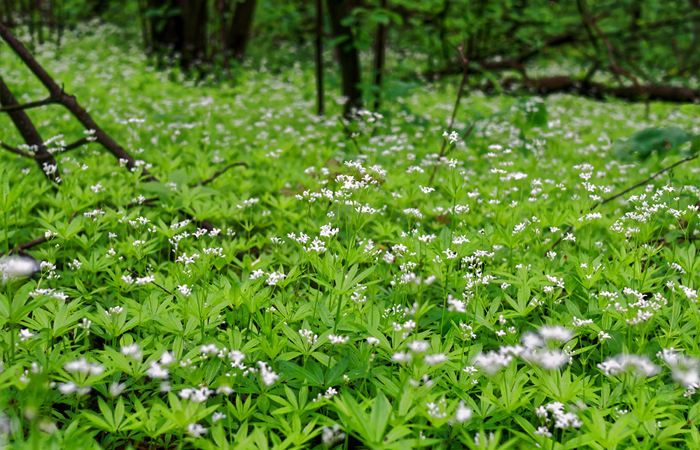
Collect woodruff in the forest
You are probably familiar with woodruff from desserts such as ice cream, Jell-O or lemonade. The supplier of the unique flavour is a low but spreading plant with star-shaped leaves and small white flowers. It is actually quite easy to recognize the woodland herb, because the smell of the leaves is very similar to the aroma of the familiar foods.
Woodruff loves damp shady places, so in the forest you will find it in the shelter of trees and shrubs, usually in deciduous forests. The best time to collect woodruff is between April and June, shortly before flowering, when the leaves taste most intense. Cut the stems just above the ground (do not pull them out), leaving at least 2/3 of the woodruff plants so that the crop can regenerate.
Then dry the leaves so that they develop their typical aroma. Incidentally, a substance called coumarin is responsible for the formation of this aroma, which can be harmful to health in large quantities. So always, follow the instructions in the recipe and, if in doubt, use woodruff sparingly.
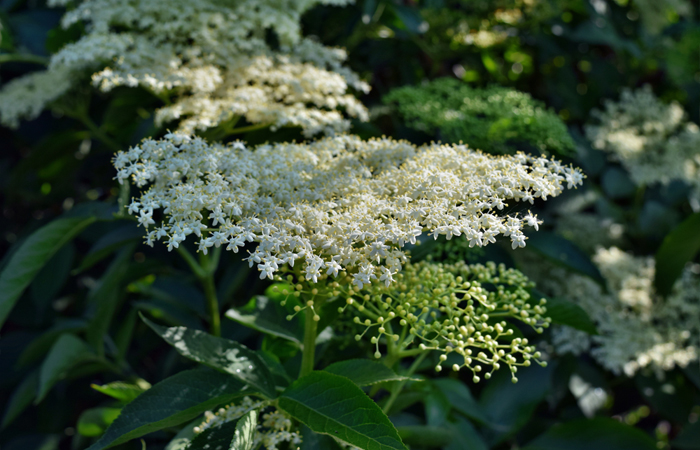
Collect elderflowers in nature
For our next candidate from the natural kitchen, you don't have to rummage so deeply in the undergrowth, because you can find elderflowers in sunny to semi-shady places, either in forest clearings, but also at the edge of country lanes or in hedgerows. In fact, you can't miss it. A single elder bush can grow up to five meters tall and just as wide.
You should also keep an eye out for such a large, woody elder bush, because within the elder genus there is a poisonous species, the dwarf elder. It, too, has umbel-shaped flowers and the characteristic black berries, but it grows rather herbaceous (has no solid wood) and low. In contrast to the true elderberry, the leaves of the dwarf elderberry are pointed and fan-shaped. You can also recognize the poisonous dwarf elderberry by the position of its berries, which are straight up, whereas those of the true elderberry always hang down. So, only help yourself to the shrub if you are absolutely sure that you have recognized it correctly.
You can harvest the elderberry blossoms from around May or June. They are only ripe for processing into syrup or jelly when all the flower heads of an umbel have fully opened. To capture the full aroma of the elderberry pollen, it is best to wait until a dry and sunny day before harvesting. Only when the sun has shone on the flower umbels for a few hours, cut them off with a sharp knife just below the flower head. Then shake carefully so as not to take any unwanted passenger’s home with you in the form of insects.
Since the aroma of the elderberry blossom comes from its pollen, you should not wash the blossoms before processing them into syrup or jelly. Only remove the thicker stalks, as they taste bitter. You can also dry the elderberry umbels to make tea mixtures or for storage.
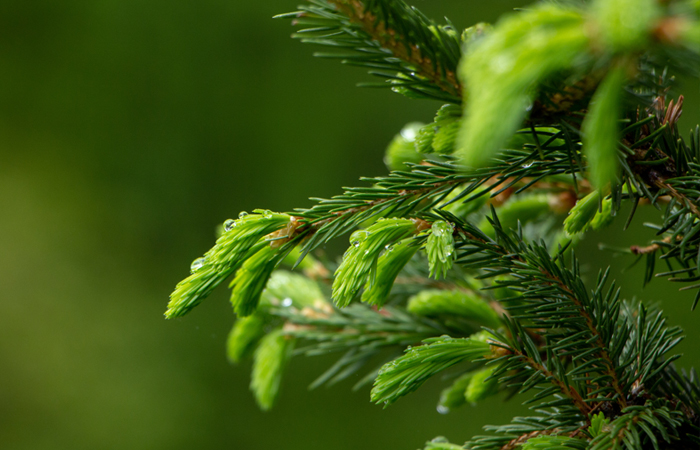
Collecting spruce tips in nature
Yes, you can actually eat the tender, light green tips of spruces, but also firs or pines. They taste somewhat resinous, of course, but also wonderfully fresh and lemony. You can collect them from May or June onwards, and you don't usually have to look far, because the conifers can be found everywhere in our forests. Nevertheless, not all forest managers like it when forest visitors pick the tender shoots. Therefore, check with the responsible forestry office beforehand and ask whether harvesting is allowed.
To ensure that the whole thing does not harm the trees, it is also important to use the right technique:
- Even if you can reach their branches very comfortably and they have many tender shoots, you should leave young trees alone, because they depend on new shoots for healthy development. Also, their wood is still very soft and by removing the tips, pathogens can easily penetrate the tender wood.
- Never pick an entire tree bare, but only take a few shoots at a time.
- The foremost shoot of a branch is always left on, as this is the only way the tree can develop evenly. Only the smaller side shoots can be harvested.
Pinch off the fine, light green tips from the tree and then you can taste them directly. Of course, the shoots do not taste good raw in large quantities, but there are many ways to use them in recipes: in pesto and salads, as well as in sweet syrups, jellies or liqueurs.
Collecting rose hips yourself
If you are out and about in September, you can look for rose hips. The red fruits of the roses contain a lot of vitamin C and prepare your immune system for the cold season. In principle, the rose hips of all rose species are edible, but those of wild roses are particularly large and aromatic. As with elderberries, you don't have to look for these rose bushes in the deepest thicket of the forest, because they prefer bright and sunny places. The so-called dog rose, potato rose or apple rose is particularly common in clearings, along field paths or in wild meadows with shrubs. They are also at home on the dunes of the coastal regions, but these are often under nature protection, so be sure to check before entering and collecting in these areas.
It is better not to simply eat rose hips raw from the tree, as both the fine hairs on the fruit and the seeds contain components that can cause severe itching. It is therefore a good idea to cook rose hips whole until they are so soft that the hairs and seeds can be filtered out. The finished rose hip purée can be made into delicious jams, for example. It is even easier to make rosehip tea, because you can dry the fruit, including the seeds and hairs, and infuse it in a tea strainer.
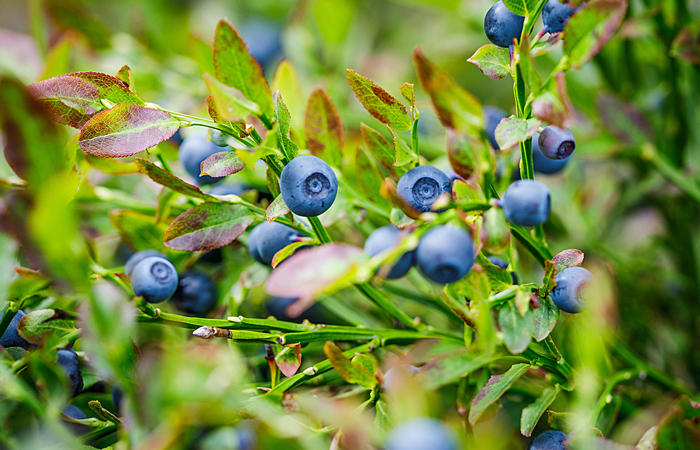
Gathering blueberries in the forest
If you want to collect blueberries, you need a little patience, because on the one hand, they are not so easy to find, and on the other hand, the harvest is quite tedious. But the reward is all the greater, because blueberries are many times more flavourful than cultivated blueberries available in the supermarket. And precisely because real blueberries are so laborious to harvest, they are hardly ever available in supermarkets. So if you want to enjoy them, you have to go in search of them yourself.
The right time for this is between June and July. Blueberry bushes prefer acidic soils, which is why they like to grow near conifers. The large blueberry stands in moorland are particularly tempting, but as these are usually nature reserves, picking is not allowed there. The best thing to do is to look out for the low-growing plants during your forest walks all year round and make a note of the spots. If you spot one, chances are good that there is a whole group of blueberry plants growing nearby.
When it comes to using blueberries, everyone probably has an immediate idea: it is possible to eat the raw berries without hesitation (washing them off beforehand is, however, highly recommended due to the low growth of the plant), but the aromatic berries are also excellent for processing into pancakes, muffins or boiled down as jam or fruit filling for pies.
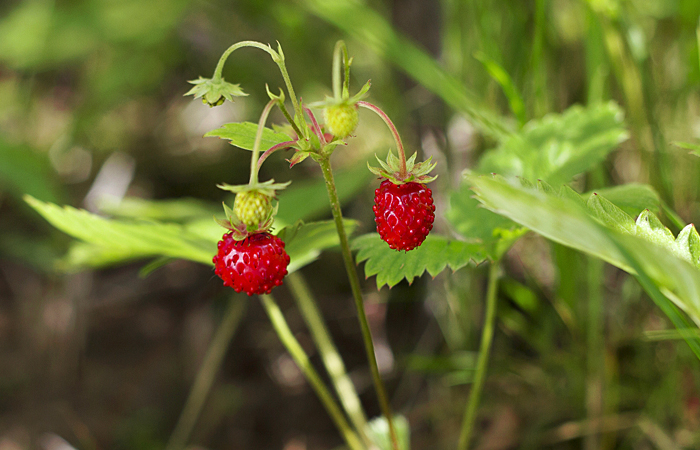
Gathering wild strawberries in nature
You can collect wild strawberries all summer long, because the small fruits ripen one after the other, so that after a few weeks new, bright red berries will hang on the bushes. You will find the 20 cm high plants on the ground of deciduous or coniferous forests. There, wild strawberries usually grow in semi-shady places that get a little sun every now and then - in clearings, on forest edges or along open paths, the probability that you will find them is particularly high.
As with all low-growing forest plants, you should also wash the wild strawberries thoroughly before eating them. Afterwards, the berries, which are only about 1 cm in size, cut a good figure on desserts or as a special cake decoration.



